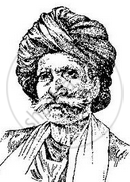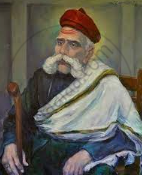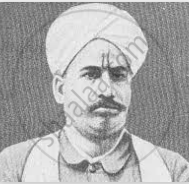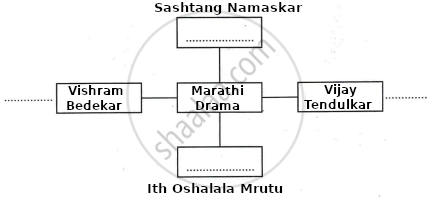Topics
Historiography : Development in the West
History : Applied History
Working of the Constitution
Historiography : Indian Tradition
The Electoral Process
Political Science : Working of the Indian Constitution
Applied History
Political Parties
History of Indian Arts
- What is ‘Art’?
- Indian Traditions of Visual Arts (Drik Kala): Painting
- Prehistoric Paintings
- Mural Paintings and Cave Painting
- Folk Styles of Paintings
- Classical Styles of Painting
- Miniature Paintings in Manuscripts
- Modern Indian Paintings
- Indian Traditions of Visual Arts (Drik Kala): Sculpture Art
- Indus Civilization Sculpture
- Folk Styles of Sculptural Art
- Classical Styles of Sculptural Art
- Indian Iconography
- Indian Traditions of Visual Arts (Drik Kala): Architecture and Sculpture
- Rock-cut Architecture
- Temple Architecture
- Indo-Islamic Architecture
- Indo-Gothic architecture
- Indian Traditions of Performing Arts
- Indian Theatre
- Indian Music
- Indian Dance
- Present Scenario of the Performing Arts
- Art, Applied Art, and Professional Opportunities
Social and Political Movements
- Movement
- Important Movements in India
- Tribal Movement
- Farmers Movement
- Worker's Movements
- Women’s Movement
- Environment Movements
- Consumer Movement
Mass Media and History
Challenges Faced by Indian Democracy
Entertainment and History
Sports and History
Tourism and History
Heritage Management
History - Imperialism
History - 20th Century Age of conflict
History - Emancipation of Asia and Africa
History - World after World War 2
Political Science
Geographical discoveries and colonization
- Concept for Geographical Discoveries and Colonization
Africa
- Imperialism - Africa
Asia: India, China, Japan
- Concept for Asia: India, China, Japan
Dictatorships in Europe, Second World War and world
- Concept on Dictatorships in Europe
- Concept for Second World War and World
First world war
- Concept on First World War
The League of Nations
- Concept for the League of Nations
Russian Revolution
- Concept for Russian Revolution
United Nations Organization
- Concept for United Nations Organization
Africa
- Emancipation of Africa
Asia
- Emancipation of Asia
Globalization
- Globalization After World War II
Scientific and Technological Progress
- Scientific and Technological Progress After World War II
Cold war
- Formation of the Cold War
Social Diversity and Democracy
- Social Diversity
- Coccept for Caste/Race and Democracy
- Concept for Language and Democracy
- Cocnept for Religion and Democracy
- Concept for Gender and Democracy
- Concept for Democracy and Diversity
Challenges to Democracy Remedial Measures to the Challenges
- Concept for Challenges to Democracy Remedial Measures to the Challenges
Internal work
Democracy
- Democracy - Meaning, Types and Characteristics
Political Parties and Types
- Political Parties
- Importance of Political Parties
- Major National and Regional Parties in India/ Types of Political Parties
Notes
Marathi Theatre:
A theatre is a place where performing arts performances, whether solo or group, are presented.
Elements of theater:
- Performers: Artists, Dancers, Musicians, Makeup Artists, Costume Designers, Electricians, etc.
- Audience: Audience, Critics, etc.
- Director: Director, assistant director, etc.
- Theater space: Stage etc.
- Design Aspects: Scenery (art design), Costume, Lighting, Sound, etc.
- Text: Script, dialogues, dramatic structure, dramatic characters, etc.
Important contributor to Marathi Theatre:
|
1. Thanjavur Maratha kingdom: The rulers of the Bhosale family of Tanjore were great patrons of drama. Some of them had written a few plays and also translated Sanskrit plays. |
|
|
2. Vishnudas Bhave:
|
Vishnudas Bhave |
|
3. V.J. Kirtane
|
|
|
4. Balakrishnabuwa Ichalkaranjikar:
|
Balakrishnabuwa Ichalkaranjikar |
|
5. Annasaheb Kirloskar:
|
Balwant Pandurang Kirloskar |
|
6. Krushnaji Prabhakar Khadilkar:
|
Krushnaji Prabhakar Khadilkar |
|
7. Natasamrat:
|
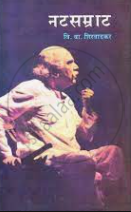 |
Other Important Contributions to Marathi Theatre:
- Govind Ballal Deval musical paly "Sharada", is very significant because it makes a satirical point on the wrongdoing of marrying young girls to older men.
- Plays like Ram Ganesh Gadkari's "Ekach Pyala" and Shripad Krishna Kolahtkar's "Mooknayak" are significant in the development of Marathi theatre.
- The well-known plays Acharya Atre wrote "Udyacha Sansar", "Sashtang Namaskar", "Gharabaher", and others aided in Marathi theatre to continue after a temporary decline.
- The recent plays based on historical themes like "Raygadala Jevha Jag Yete" and "Ithe Oshalala Mrutyu" by Vasant Kanetkar, "Ghashiram Kotwal" by Vijay Tendulkar, "Tilak Ani Agarkar" by Vishram Bedekar became very popular.
Marathi theatre performers:
- Due to the variety of plays' subjects and genres, the Marathi theatre kept getting richer.
- Ganpatrao Joshi, Narayanrao Rajahamsa, also known as Balgandharva, Keshavrao Bhosale, Chintamanrao Kolhatkar, and Ganpatrao Bodas are only a few of the legendary Marathi theatre performers who are still regarded as brilliant actors.
- Early Marathi plays were performed outside. In Mumbai, closed theatres including Play House, Rippon, and Victoria were initially constructed by the British. After that, Marathi theatrical performances progressively moved to enclosed theatres.
If you would like to contribute notes or other learning material, please submit them using the button below.
